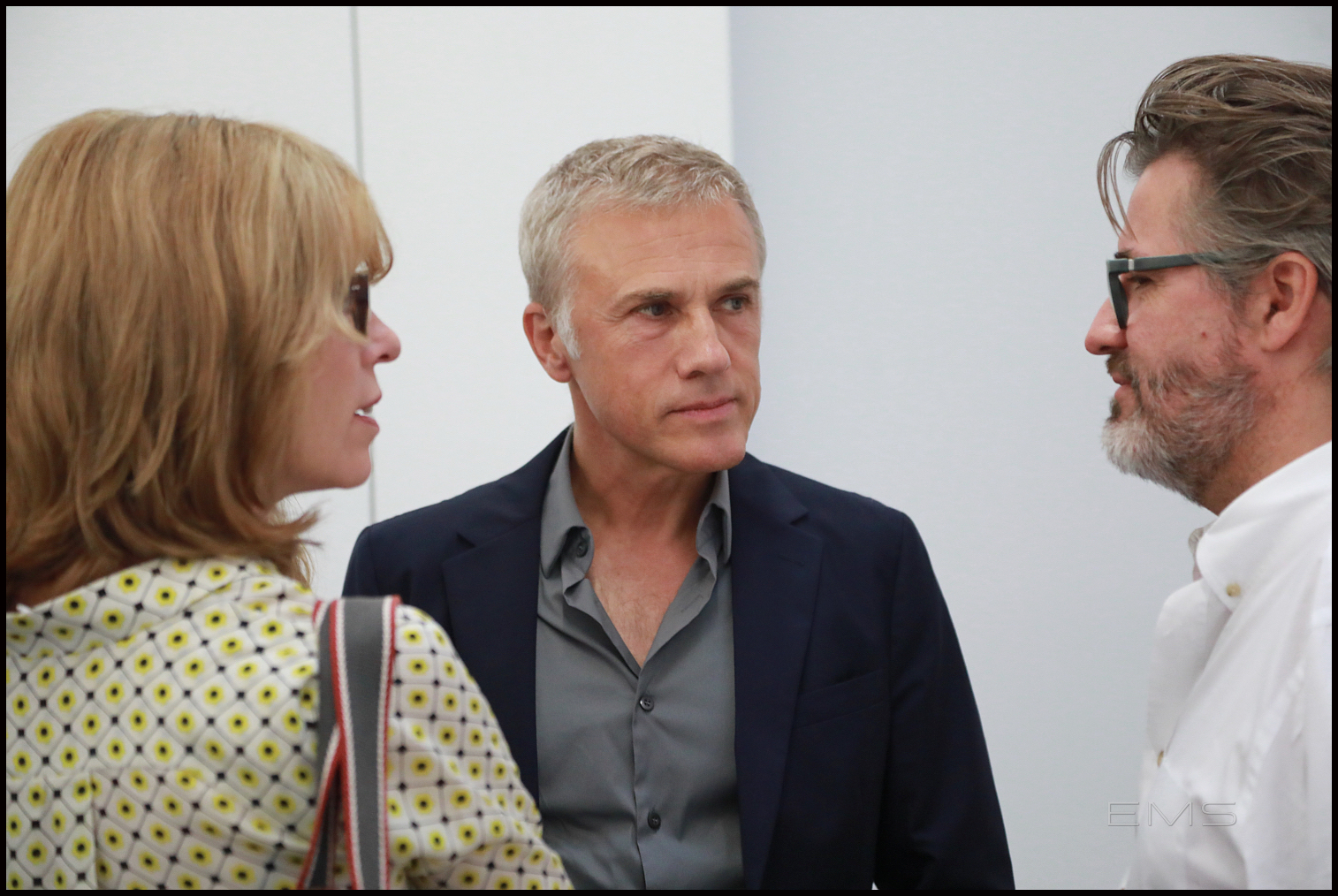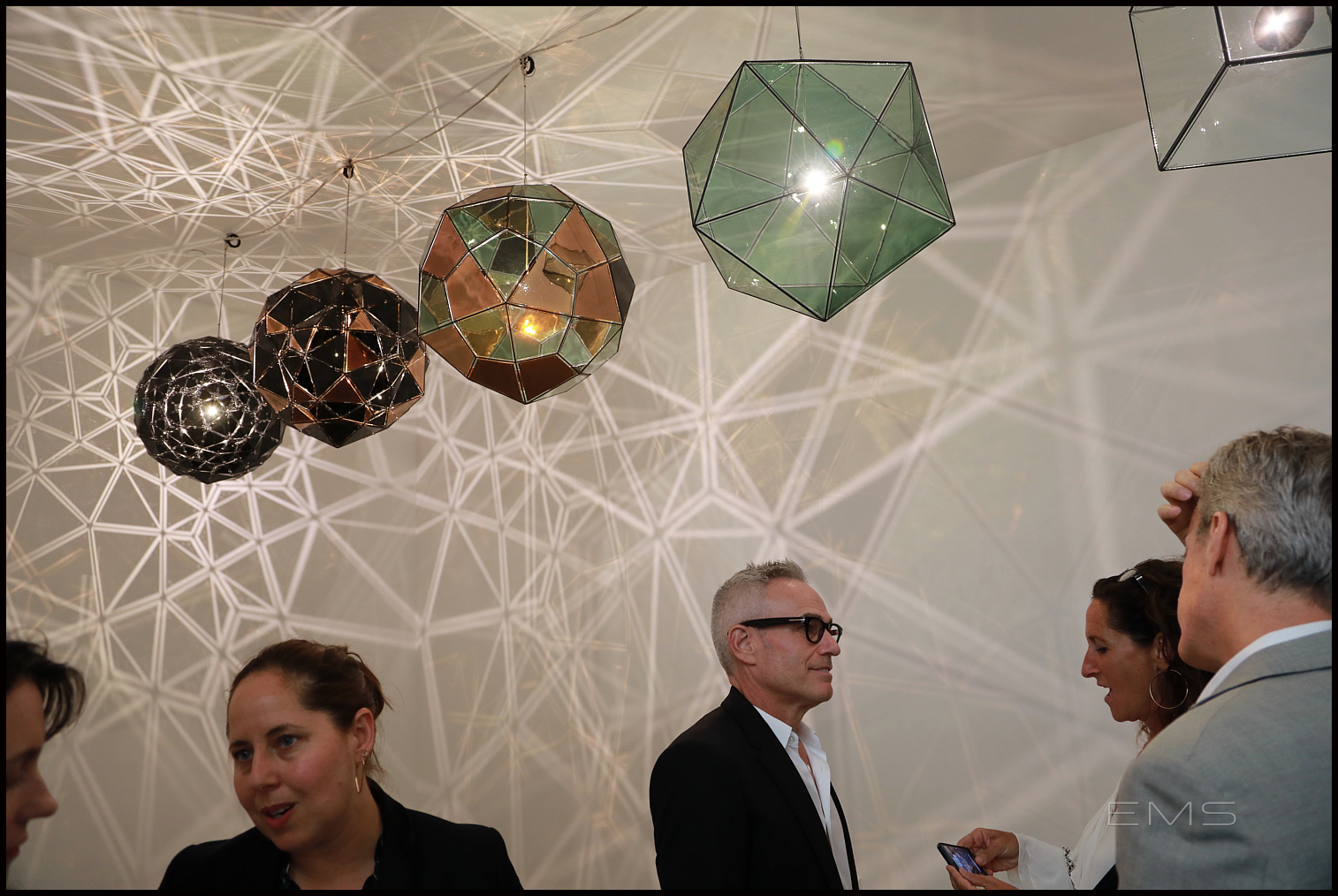(per website) Kohn Gallery is pleased to announce Tony Berlant’s first solo exhibition with the gallery, “Fast Forward,” opening in September and running through November 3, 2018. This is his first exhibition since joining the Kohn Gallery in 2017. Berlant’s new body of work is deeply invested in the visual world and the legacy of objects and images that span across time and space. Focused on a sense of autobiography and on a further extension into central themes of his artistic practice for over 60 years, the new works embody that which cannot be seen but is strongly felt, and now made visible in Berlant’s semi-abstract practice.
Tony Berlant, like fellow Californian artists Ed Ruscha, Bruce Conner, and Joe Goode, has been instrumental in establishing the aesthetic sensibility of the West Coast Pop Art movement. Berlant was part of the seminal 1963 exhibition Pop Art USA at the Oakland Museum of Art, one of the earliest exhibitions of Pop Art that also included Berlant’s contemporaries Robert Rauschenberg, Andy Warhol and Claes Oldenburg. Kohn Gallery’s solo exhibition by Tony Berlant illuminates his continuing importance within today’s flourishing Los Angeles art scene.
Since the 1960s, Berlant has employed a dazzling collage technique using images printed on metal, cut into small pieces and obsessively nailed down upon a flat surface with steel brads to create a visually complex assemblage of painterly gestures. His source material varies, from decades-old tin packaging to recently produced signage, which, when collaged, bring together objects, ideas, imagery and typography from disparate time periods and locations within a singular moment. Working in formats that address both painting and sculpture, Berlant’s pieces exist as distinct objects, occupying dimensional surfaces that resemble anything from flat canvases to cubes, houses and even classical temples.
Many of Berlant’s recent works are constructed over photographs taken by the artist, printed on metal, and studded by thousands of brads. This process creates an emphasized sense of flatness and yet paradoxically a visual sensation reminiscent of a star-studded galaxy. The result is a relief-like painting—a flat work with a palpable, sculptural presence.
In this new body of work, Berlant’s precise use of images and fragments bring together varied subjects matter into a single work: Personal experiences, the natural world, and Berlant’s recent scholarly and curatorial pursuits. Hung at one end of the gallery, a new large-scale wall piece depicts Berlant in an altered portrait taken by his friend Andy Warhol, mounted across from a work dedicated to his wife Helen. The surfaces of these works are strewn with collaged metal images of trees, leaves and flowers, so that photographic portraiture is over-laid with an abundance of flora. These new pieces merge the personal and the universal, Pop Art and Abstraction, sculpture and painting.
Additionally on view will be new three-dimensional works in the shape of rectangular boxes. The sides of these works are covered with fragments of cutout text, with letters ranging in a variety of typefaces, colors and styles, and placed in a manner that nearly contradicts the shape of the box and invites shifting interpretations.
Central to this new body of work is the mental phenomenon of seeing morphing images where none objectively exist. This was also a central idea explored in the recent exhibition First Sculpture at the Nasher Sculpture Center, co-curated by Berlant based on his original insights into the origins of art. Berlant also co-curated the LACMA exhibition “Decoding Mimbres Painting: Ancient Ceramics of the American Southwest”, which runs concurrent to Berlant’s show at Kohn Gallery. The LACMA exhibition is on view from May 20 through December 2018.
Berlant’s work presents shape-shifting images to the viewer within his complex, collaged surfaces. In these complex works lay a formal free association of text and image, and an overwhelming amount of possible perceptions that the mind cannot un-see. Random letters may form into words, while a face may emerge from scattered leaves, all of which provokes a renegotiation that the viewer must execute to fully comprehend the complexity of Berlant’s visual vernacular. In this manner, Berlant’s work references the visual glut of our modern world while deconstructing its hierarchy, bringing together moments of displaced time and meaning into a cohesive whole for the mind to perceive as a shared and unified moment.

